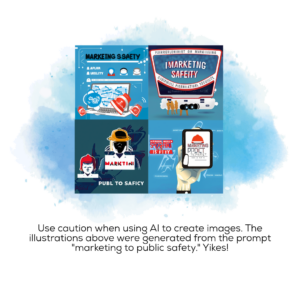
Scope creep. We’ve all heard of this in the world of project management, but did you know it can happen in your messaging too? Companies can get distracted by what their competitors are saying or fleeting trends, losing touch with what they should be communicating to their customers.
Not staying true to a strategic messaging plan can be detrimental to your brand and position in the marketplace. Visualize a vine growing freely. It grows in a circular motion, reaching for anything and everything to hook onto. In a similar fashion, messaging has the potential to spin out of control and entangle itself if you aren’t paying attention.
A well-thought messaging plan can serve as the trellis that guides your vines—the different points you want to communicate to target audiences. This helps nurture a strong, well-maintained voice that can adapt to new growth, including expansions into new markets, products and services.
Where to begin crafting a strategic messaging plan
Messaging is rooted in your company’s Communication Strategy, the roadmap that guides all marketing initiatives toward your overarching goals.
Craft messages that are connected to organizational positioning and tie into the core purpose of serving your customers. This will communicate the value you provide them, leading to genuine relationships building vs. surface level connections.
This also allows your marketing team and extended staff to understand how messaging resonates with the “why” behind your organization—why you do what you do. They can refer to the messaging songbook and learn to sing from it in a way that is cohesive in all external relations with customers, prospects, partners and more.
It’s for these reasons your Communication Strategy should serve as the foundation for messaging development—it’s the solid ground that your messaging stands on. This way your team can constantly refer back to it to ensure that messaging stays planted in who you are as an organization.
The difference between the right word and the almost right word is the difference between lightning and a lightning bug.
– Mark Twain
Intentional messaging flows through a hierarchy
How many key messages do we need? Who are we communicating to? How do we say it? These are questions that can make it challenging to navigate the messaging conception process. The best messaging flows through a hierarchy of key sections that have distinctly more freedom for adjustments, depending on the messaging in question. Let’s think of it as a pyramid:

- Core/Value Messaging: Stays true as long as your vision and mission remain the same. They reflect your organizational values and are communicated internally to ensure consistency with external audiences. (The base of the pyramid and what everything should always tie back to.)
- Audience-Specific Messaging: Should always be benefit-focused. These messages are “hooks” that catch your audience’s attention. They should be flexible enough to adjust to current trends and interests. (The middle of the pyramid, with minimal flexibility.)
- Product/Service Messaging: Should communicate value over features. Customers should understand how it helps them in their line of work. These can be more fluid based on updates, new features, upgrades, etc. (The top of the pyramid and more flexible.)
In a world deluged by irrelevant information, clarity is power.
– Yuval Noah Harari
Guidelines for keeping messaging true to the plan
Investing the time to hone the perfect strategic messaging plan for your organization is crucial, but it’s only half of the work. The other part is ensuring your organization doesn’t deviate from its intended purpose. Adhering to the strategy will bring your key messages to life for your target audiences. Here are some guidelines to keep in mind as you roll it out:
- Repeat, Repeat, Repeat. Keep shouting the same message from the mountaintops until you hear it echoed back by your audiences. They say it takes about 50 seconds to remember a new word, let alone a set of intended messages, so repetition is needed. Don’t forget to also repeat them internally so everything is communicated cohesively from the inside out.
- Keep messages in close reach. Visibility is key in supporting consistency, so post messaging in your cubicle or office bulletin board for all to be reminded of. Don’t just put them on the shelf and forget about them. Live with them, engage with them and use them every day so that they become second nature for your organization and team.
- Check on yourself. Be disciplined and audit your work every once in a while. Are spokespersons hitting their talking points? Is marketing content getting too far away from the benefit messaging you spent time developing? If you’re not hitting the mark, convene the team to reinforce a commitment to the original plan.
- Don’t lose sight of the competition. You probably did a competitive landscape review with regard to messaging when you developed your current playbook, but the world is ever-changing. Stay on top of what they’re saying and adjust messaging where needed to keep up the pace. At the same time, don’t spend too much time on those competitors. Unless you’re looking at them in the rearview mirror!
- Remember differentiator messages. Speaking of competitors, these are your hallmark messages that set you apart from them. They communicate the value-based difference only you can provide. It’s important to weave these into any mediums or collateral that are audience-based so that readers are aware of your leadership in the market.
Messaging, when executed with the right approach, builds your brand’s reputation and naturally allows you to claim a poised position in the marketplace. It permeates all communication channels—internal and external—creating a balanced identity that will be remembered. It’s a noisy world out there, so when you capture a customer’s coveted attention, it’s important to deliver a compelling message that makes an imprint. An imprint that contributes to the lasting legacy of your organization.
Don’t be afraid to call on your marketing team to flex their green thumbs from time to time. Your organization needs to nurture and tame the ever-growing vines of your strategic messaging plan. Do this consistently and you will notice the fruits of your labor—from brand recognition to customer engagement.
Related Posts
-
When public safety professionals look to your brand, what do they expect? Over the years,…
-
You know marketing your organization matters. You know measuring the results of your marketing matters.…
-
It’s a common lament among companies and organizations serving healthcare and public safety: there are…








 The RedFlash Group is a GSA Contract Holder under Schedule 541, Advertising and Integrated Marketing Solutions
The RedFlash Group is a GSA Contract Holder under Schedule 541, Advertising and Integrated Marketing Solutions